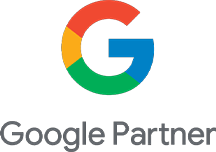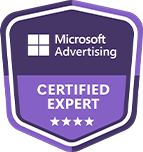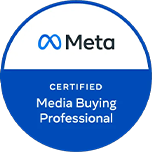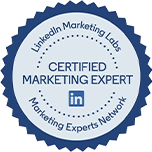Hello, I’m Bob Ottaway, Director of Cosmetic Surgery Marketers, and my agency has been helping Cosmetic Surgery Practices nationwide deploy marketing campaigns for specialty services like the “Mini Facelift” for over two decades.
The rise of artificial intelligence and large language models (LLMs) like ChatGPT, Google’s AI Mode, and Microsoft’s Copilot are reshaping how potential patients seek information. Instead of browsing through a list of links, users now receive synthesized and conversational answers from AI chatbots.
This new landscape offers medical offices new routes toward potential clients and is being overlooked by most medical professionals at the moment.
For cosmetic surgery clinics that are in the know, this trend opens a direct path to being featured in a space that users trust and where few competitors are currently featured.
Appearing in such AI-generated outputs, especially for patient-focused queries, drives high-intent traffic from prospects actively researching procedures, selecting surgeons, or ready to book consultations. The impact on lead quality and conversion rates is both measurable and significant.
This guide outlines a precise set of strategies for cosmetic surgery practices to align their digital presence with the technical and semantic requirements of LLM search visibility.
What LLMs Look For: How to Make Your Cosmetic Surgery Website ‘Visible’
Appearing in LLM outputs can be complicated. It demands creating content that aligns with how these systems select and rank information. But once you have an understanding of how to do this, cosmetic surgery practices can leverage this knowledge to improve their chances of being referenced in AI-generated search engine answers, patient chats, and voice assistant searches.
LLMs Prioritize Authoritative, Structured, and Trustworthy Content
LLMs such as OpenAI’s GPT-4 extract responses from sources exhibiting domain authority and content clarity.
Growthmarshal.io explains, LLMs “analyze massive datasets, weigh credibility based on historical consistency, and cross-check citations across trusted materials.”
Medical websites that demonstrate deep topical relevance, consistent formatting, and factual accuracy get chosen more frequently. These systems analyze billions of documents and favor patterns that resemble high-quality medical information, especially when delivering advice in health-related contexts like cosmetic procedures.
Key Factors That Influence LLM Selection
Medical Relevance and Accuracy: Descriptions of surgical techniques, pre- and post-operative care, and risk-benefit analysis must reflect current procedural standards. LLMs cross-reference claims with verified data sets, authoritative health bodies (e.g., Mayo Clinic or NIH), and peer-reviewed publications.
Providing well-sourced, medically aligned explanations increases content weight.
Keyword Coverage with Semantic Context: It’s not enough to use keywords like “facelift” or “tummy tuck.” Surrounding phrases such as “average healing time,” “minimally invasive options,” or “ideal candidates by age” offer richer semantic context.
LLMs interpret content through vector-based language models, so related terminology and conceptual depth significantly boost discoverability.
Readable, Conversational Structure: Dense technical writing often gets skipped. Instead, LLMs elevate content written in a tone patients trust and can actually understand.
Structured use of header tags, short paragraphs, bulleted lists, and subheaders helps question-answering AI systems parse ideas cleanly. Prompt-style phrasing (e.g., “How long does a mini-facelift last?”) mirrors typical user inputs and matches common query formats.
External Signals: Backlinks, Structured Data, and Intent Alignment: Quality backlinks (especially from medical associations, academic institutions, or recognized health directories) act as indicators of trust. Structured data, such as schema.org for physicians or medical procedures, offers metadata that LLMs process to validate and categorize content.
Alignment with user intent, such as clearly addressing “cost of mini-facelift in Detroit” rather than generic procedure info, improves match strength between AI models and your webpage.
When reviewing your own site, consider this: would your content still make sense and provide value if read aloud by a voice assistant? If the answer is no, restructure it. Think in questions and dialogue. That’s how LLMs “think,” and matching their logic is what puts you ahead.
Local and Medical SEO: Anchoring Your Cosmetic Surgery Practice in LLM Search Results
Use Local SEO to Establish Geographic Authority
Location-based optimization plays a defining role in determining whether your practice surfaces in LLM-driven search environments. Large language models favor content that’s relevant not just by topic, but by physical proximity to the user. To build that relevance:
- Claim and fully optimize your Google Business Profile. Populate every available field, hours, services, categories, and update consistently. Completing the profile enhances your visibility across platforms where LLMs pull reference data, including Google’s Knowledge Graph and Maps integrations.
- Incorporate hyperlocal references in your HTML structure. Mention your city, neighborhood, and metro area in headings (H1–H3) and in paragraph content where natural. For example: “Facelift Procedures in La Jolla | Trusted by San Diego Patients”.
- Embed a static Google Map on your contact or location pages. This allows both search engines and LLMs to associate your physical address with searchable geography.
Signal Medical Context Through Specialized Markup
Medical-intent searches trigger algorithmic behaviors distinct from general queries. Models like GPT-4, Med-PaLM, and Google’s Gemini prioritize professionally structured content validated by medical authority. You can reinforce this relevance by embedding schema metadata:
- Implement a “MedicalClinic” or “CosmeticSurgery” schema. Attach JSON-LD metadata that articulates your practice type, services, practitioner credentials, and accepted insurance types. This structured data gets harvested by LLMs for response validation and can surface your site in AI-powered featured snippet contexts.
- List affiliations and credentials prominently. LLMs give preference to verified affiliations with U.S.-based hospital systems, state medical boards, and certifying organizations. Display those credentials clearly and mark them up with “Organization” and “Physician” schema where applicable.
- Host original images of your clinic’s interiors, signage, and patient-facing areas. These not only contribute to local familiarity but also serve as context signals when LLMs pull from multimodal datasets, including image alt tags, EXIF geographic data, and file locations linked to local service pages.
Is your practice also featured in region-focused healthcare directories or affiliated with local hospitals? Reference those partnerships within your service pages and tag them using outbound links with medically themed anchor text. This strengthens semantic mapping between your site, your location, and your specialty.
Structured Data: Help LLMs Understand Your Website as a Surgeon
Structured data acts as the translator between your cosmetic surgery site and large language models.
EpiqGlobal calls it “the most critical data type to maximize AI’s benefits.”
It enables LLMs and search engines to identify the core entities on your pages, clarify your medical specialization, and pinpoint your geographic coverage. Without structured data, even highly relevant content can be misunderstood or underutilized by AI systems.
Implement Key Schema Markups
Start by embedding schema.org-approved markup into your HTML. Focus on the following data types to match the way LLMs index and retrieve information about medical services:
- Organization: Define your practice’s name, logo, contact info, and website URL. This asserts your brand identity across AI contexts.
- LocalBusiness: Include data such as your address, opening hours, service area, and accepted insurances. Used by LLMs to anchor responses tied to location-sensitive queries like “facelift surgeon near me.”
- Physician: Highlight the credentials and specialties of your lead practitioners. Set medicalSpecialty to CosmeticSurgery and include professional affiliations, degrees, and license info. This helps AI engines associate your site with medically authoritative responses.
- MedicalSpecialty: Set as CosmeticSurgery to ensure your site surfaces in conversations or prompts requiring surgical aesthetics.
- Service: List the specific procedures you offer using separate Service schema items like facelifts and liposuction with pricing, target gender where relevant, and descriptions.
- FAQPage: Use QA schema markup on your patient-facing FAQ pages. LLMs often pull directly from these during their response generation when the question context matches.
- AggregateRating: Add rating counts, average scores, and testimonial excerpts using valid AggregateRating markup. This not only enhances snippet eligibility but also strengthens trust in AI summaries involving reputation.
What This Accomplishes
By structuring your data clearly, you allow LLMs like ChatGPT, Google’s AI Overviews, or Bing Copilot to:
- Identify you as a healthcare provider with cosmetic specialization.
- Pull your services as contextually relevant answers to specific search prompts.
- Draw on structured excerpts for AI-written summaries and local recommendations.
- Attribute authoritativeness when users search for “top-reviewed cosmetic surgeons” or similar nested queries.
Proper implementation places your practice in a position to be found and referenced, not just indexed. LLMs need clarity and structure to pick up your signals. Schema markup gives them both.
Build a Content Hub Around High-Intent Cosmetic Surgery Topics
For a cosmetic surgery practice aiming to stand out in LLM-powered search environments, building a tightly focused content hub around high-intent patient queries creates direct pathways to discovery.
These hubs provide LLMs with dense topical relevance, allowing better indexing, richer answers, and more accurate surfacing for real-world patient questions.
Identify Patient-Centric Keywords Using AI and SEO Tools
Start by uncovering the language patients use when researching cosmetic procedures online. Tools like Ahrefs, SEMrush, or Google Search Console reveal actual search terms with measurable monthly volumes. Meanwhile, platforms like ChatGPT or Google’s Gemini can simulate how patients phrase questions in natural conversation.
- Search volume data pinpoints high-traffic opportunities. You can get this information from tools like Google’s Keyword Planner or AHrefs.
- Natural language processing (NLP) tools extract question clusters such as “How long does swelling last after liposuction?”
- Topic grouping tools identify semantic relationships for broader coverage e.g., pairing “mini-facelift” with “facelift safety.”
Use Patient Accessible Cosmetic Surgery Terminology
Match your language style and vocabulary to patient expectations. For example, a layperson is more likely to search for “Brazilian butt lift” than “gluteal augmentation,” and will type “nose job cost” more often than “rhinoplasty price.” Reflecting keyword usage from patient data ensures your content mirrors how real queries are structured, which directly assists LLM categorization.
Write Content That Answers Real Patient Questions
LLM queries don’t resemble exact-match keywords, they focus on questions, problems, and conversational phrases. Build blog posts and procedural pages that directly address long-tail, intent-rich questions:
- “Is facelift recovery painful in the first week?”
- “How long before I can exercise after breast implants?”
- “What can go wrong during eyelid surgery?”
Balance medical accuracy with conversational tone. Use patient-friendly phrasing without jargon. Explain, then expand. LLMs favor content that answers first, then elaborates diplomatically.
Publish Cornerstone Content Around Critical Patient Topics
Cornerstone content forms the root structure of your content hub. These long-form pages should explain cosmetic procedures at depth, backed by references, internal links, and visual elements like diagrams, timelines, or recovery charts.
- Procedure overviews: Include surgical steps, timeframes, anesthesia types, and aesthetic goals in plain language.
- Pre- and after-care process: Provide detailed content on what to expect before consultation, post-op restrictions, timelines for bruising/swelling, and medication instructions.
- Q&A-style medical risk and recovery guides: Break down side effects, likelihood of complications, and timelines for healing using accurate, cited data.
Link Content Internally to Build Topical Authority
Once foundational and supporting content is produced, connect the dots. Use internal links to demonstrate topic depth and help LLMs understand the relationship among your pages. For example:
- Link your “Mommy Makeover Guide” to separate articles on facelift and breast lift care.
- Interlink FAQs across different procedures that mention overlapping risks like seroma formation or scarring timelines.
- Include breadcrumbs and related article widgets to create persistent topical context.
This internal architecture shows LLMs you’ve built a knowledge map, not just a blog cluttered with disconnected pages. That cohesion amplifies surfaceability and strengthens domain relevance across patient scenarios.
Trust Signals That Move the Needle in LLM Searches for Cosmetic Surgery Content
Reference Authoritative Medical Sources. LLMs Notice
Large Language Models respond favorably to content that connects with trusted, verifiable institutions. Cite medical authorities explicitly. When referencing procedural information, recovery timelines, or risk factors, link to organizations like the American Board of Cosmetic Surgery, Mayo Clinic, or NIH.
Those citations signal to LLMs that your content aligns with peer-reviewed, evidence-based knowledge, which boosts your inclusion in search outputs.
Don’t bury these links. Anchor them naturally within procedural descriptions, FAQs, and treatment overview pages where relevance peaks. For example: “According to the American Board of Cosmetic Surgery, an ideal candidate for facelift typically meets these criteria…”
Display Surgeon Credentials in Detail. Not Just Names and Titles
Embedding credentials directly into the content demonstrates transparency, a characteristic LLMs now prioritize in ranking health-related material. Move past generic bios. Instead, introduce your surgical team with:
- Full name and high-resolution photograph
- Board certifications with year earned and issuing body, e.g., “Board Certified by the American Board of Cosmetic Surgery, 2014”
- State medical license number and active status
- Published work or contributions to medical journals
These details serve a dual role: real users find them reassuring, and LLMs index them as concrete trust factors.
Showcase Safety Measures and Transparent Practices
Interactive LLMs prioritize content that exhibits ethical duty-of-care cues. Pages covering surgical procedures should dedicate space to the clinic’s safety protocols. Describe your:
- Informed consent process: articulate how patients are educated about benefits, risks, alternatives, and recovery expectations before surgery.
- Facility accreditation: specify agencies like AAAHC or the Joint Commission.
- Continuity-of-care steps: from pre-op consultations to post-op follow-ups and recovery supervision.
- Emergency guidelines: briefly outline your in-clinic response capabilities.
LLMs flag this kind of granular detail as an indicator of topical authority and ethical alignment in health-related topics. Including this helps differentiate your site from lower-credibility competitors operating with generic, template-driven content.
Conclusion: Positioning Your Cosmetic Surgery Practice for the Future of Search
The rise of LLM-powered search is more than a shift in technology, it’s a shift in visibility, credibility, and how patients choose their providers. As conversational AI platforms like ChatGPT, Google AI Mode, and Bing Copilot become trusted sources of medical information, practices that adapt early gain an edge not just in rankings, but in relevance.
By aligning your content strategy with the technical, semantic, and trust-based signals LLMs prioritize, you’re not just optimizing for search; you’re building a digital presence that mirrors how patients actually research cosmetic surgery today.
Structured data, local SEO, medically accurate content, and strong credentials all work together to make your practice the answer that gets surfaced. The window to lead this space is open, but it won’t stay that way for long. Start now. Be the practice patients find first, and trust most.







